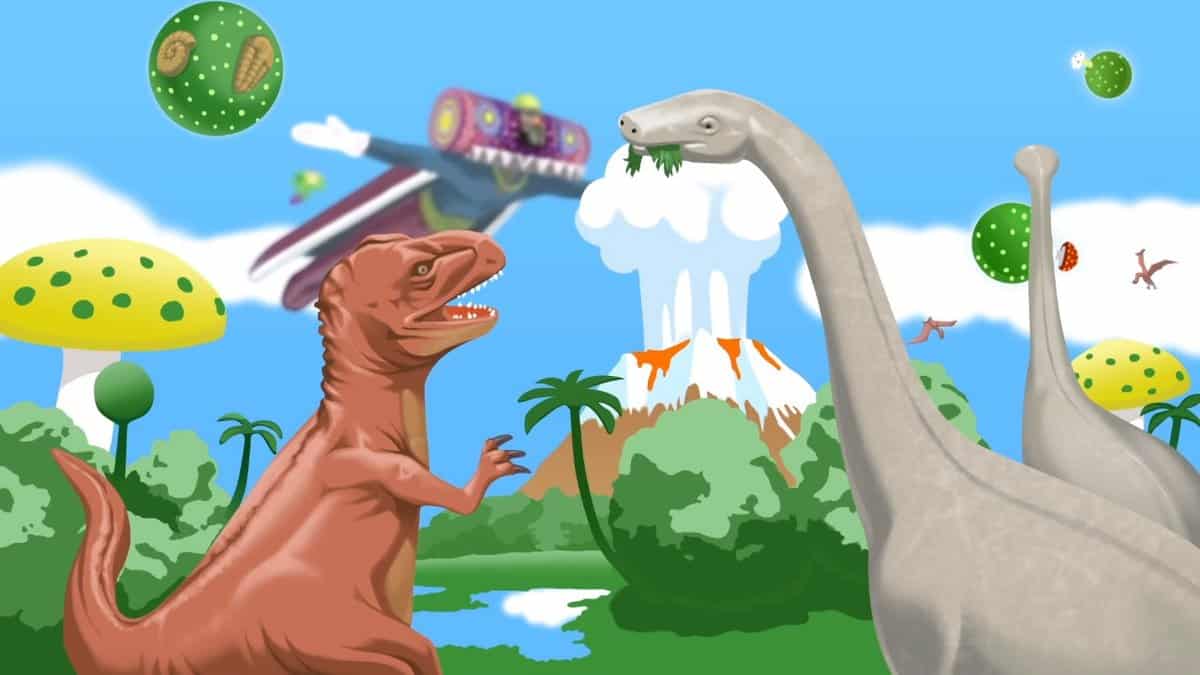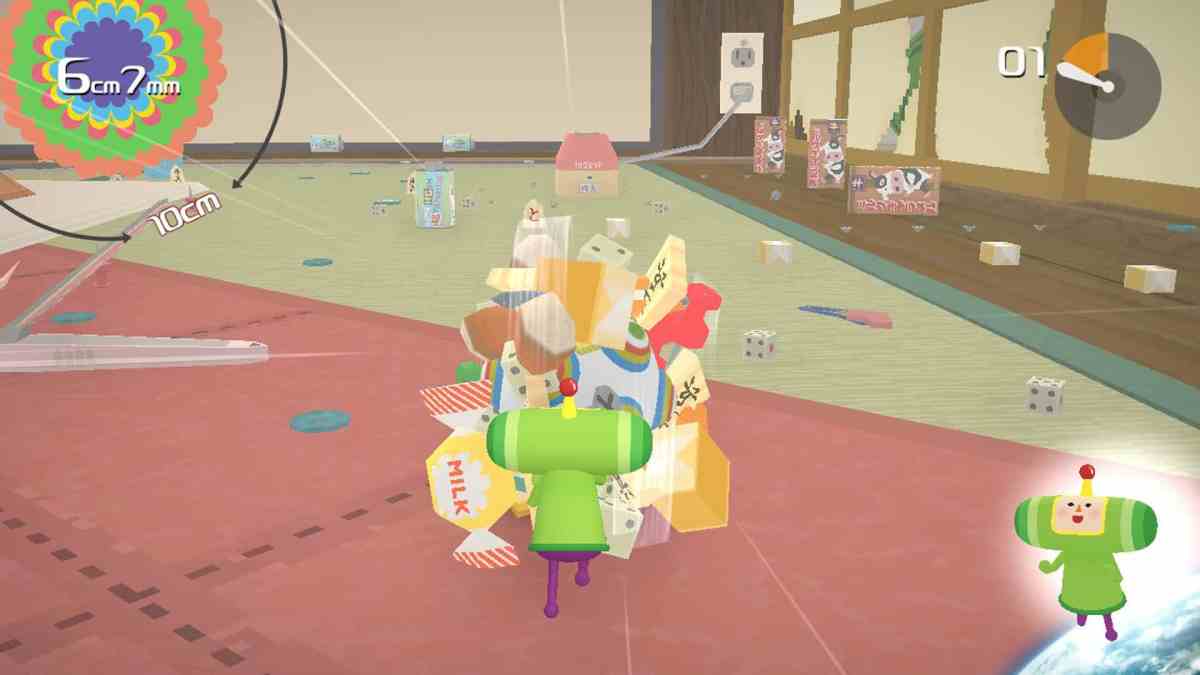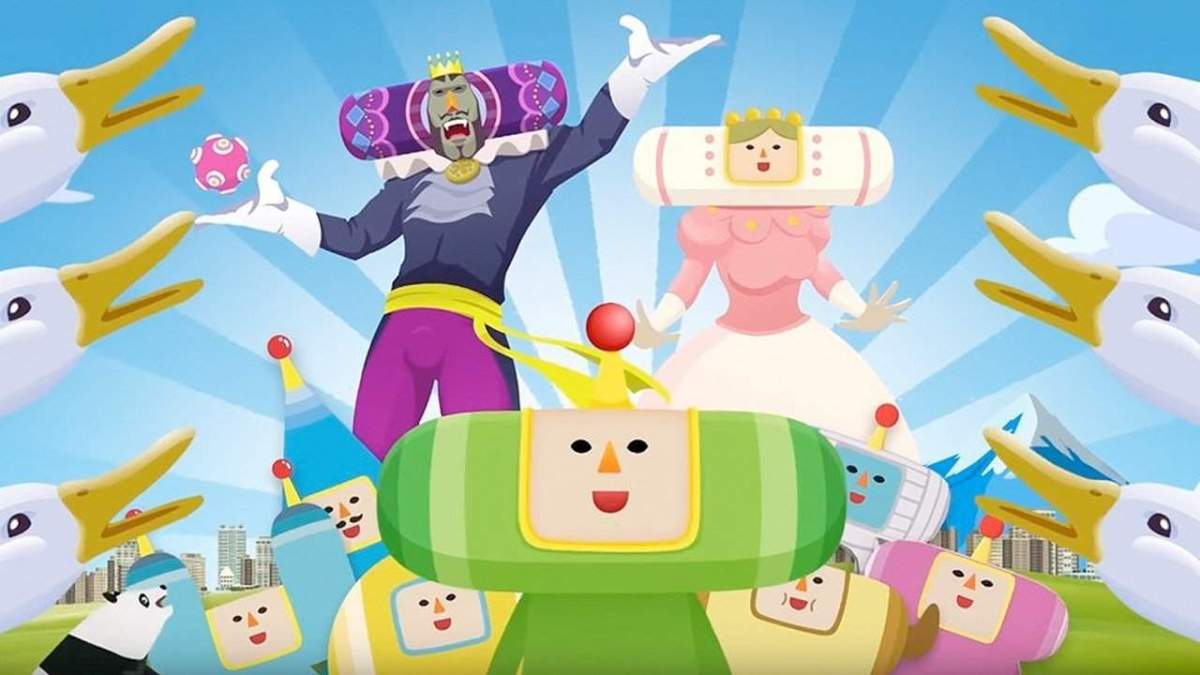There are a lot of games about the act of creation. From slowly building up your island in Animal Crossing: New Horizons, to leveling up your Phantom Thieves in Persona 5, to Media Molecule’s Dreams, which is pretty much a video game that gives you all the tools needed to make your own video game. And of course, the opposite is true. There are plenty of games centered around the act of destruction. Bringing down a building in Battlefield 4, using your psychic powers to tear apart the Oldest House in Control, and hell, even clearing a Tetris board feels a bit destructive.
But there are few games that manage to combine the acts of creation and destruction quite as beautifully as Katamari Damacy. And amid its absurd presentation, wonky physics, and wonderful soundtrack, you’ll find a game that is utterly therapeutic in how it balances those two distinct actions.
First released in 2004 on PlayStation 2, Katamari Damacy was of a generation of wholly unique and experimental games to come out of Japan, alongside cult classics like Mister Mosquito and Seaman. These games felt like precursors to modern hits like Untitled Goose Game, Octodad, and Getting Over It with Bennett Foddy — games where the rough edges aren’t bugs, but rather features.

Katamari Damacy roughly translates from Japanese into “clump soul,” which is fitting, considering the entire game is about rolling every single thing in the universe up into one neat mess of a ball. The general gameplay flow is pretty simple. As the Prince of All Cosmos, you move your Katamari around a level, rolling over objects that are smaller than you and adding them to your orbit. This increases your size, allowing you to then roll up bigger things, which in turn continues to increase your size. It’s a simple and recursive routine that makes the whole thing very easy to pick up, understand, and start having fun with.
There’s something grounded about starting out as a tiny ball, only able to roll over thumb tacks and paper clips. Each level is built around visually representing the progress you’ve made over the course of a few minutes. It feels great to be chased by something bigger than you, knowing full well that in a few moments, the roles will be reversed. Katamari visualizes the small victories that ultimately make up your Capital-P Progress in fantastic ways. You’re routinely reminded that your Katamari is currently as big as any given number of smaller objects. This can range from a thousand bowling pins, to a few dozen adult Kodiak bears. It’s gratifying to see this strange comparison grow larger and larger as you progress through Katamari Damacy.
Another neat trick at play here is how the game occasionally zooms out once you’ve hit certain size milestones. Seeing the backyard you spent the first few stages in now as a small speck of a neighborhood that you currently dwarf is immensely satisfying. Looking at how large you are at the end of a level and knowing how small the first hundred objects you rolled up were exemplify the phrase “from humble beginnings.” Reflecting on everything you’ve accomplished allows you to see the forest through the trees — and then subsequently roll the whole damn ecosystem up into a ball.

There’s also a specific itch that’s scratched when clearing up the clutter of Katamari’s stages. It feels like creating order from chaos. It’s the same kind of joy that comes from spending a solid weekend doing a deep clean of your apartment or house. Sure, it most likely won’t be staying that way for long, but there’s a reason that a million people subscribe to a subreddit dedicated to power washing videos. It just feels good.
Life is chaos. But seeing that chaos glom together into a single mass that gets transformed into a celestial object is, in a strange way, cathartic. But through it all, there’s one constant. No matter how well you’re progressing in a level, and no matter how much you’ve been rolling up at any given moment, the Prince is always there in the corner of the screen, having a mild panic attack as he continually strives for more. If that’s not real, I don’t know what is.
With a different aesthetic, this core concept feels like it could exist as a ‘50s monster movie like The Blob. And honestly, if you really stop and think about it, the whole thing is kind of terrifying. By the end of a level, your Katamari might consist of everything from sashimi and produce, to office supplies and kitchen utensils, to people and their pets, to the very buildings that housed all of those things in the first place. If you played the 2016 game Inside, you know how this could look under a different light.

But Katamari’s presentation matches its mechanics perfectly. It feels like you’re tuned into a Saturday morning cartoon from a slightly alternate dimension. You recognize all of the objects and understand all of the words, but something about the order of it all doesn’t quite make sense. But Katamari isn’t really a game about understanding. Rather, it’s a game about feeling. And everything about Katamari feels incredible. The simple geometric shapes and pastel colors vibe perfectly with its infectious soundtrack, which remains one of the most iconic of this century.
Katamari Damacy is one of my “forever” games. I own some version of it on half a dozen different platforms, including most recently grabbing Katamari Damacy Reroll on the Nintendo Switch. And I find myself returning to it a few times every year and just getting lost in its warm familiarity. I’m sure you all have games like that.
I don’t go in with the goal of finding all the presents and unlocking all of the costumes. I’m not trying to see if I can beat my high scores or complete it in a shorter amount of time. In fact, despite having played hundreds of hours over the years, I don’t feel like I’m any better at it than I was when I first played it back in 2004. And for me, that’s kind of the point. Katamari Damacy’s absurd ballet of creation and destruction isn’t about getting better at it. It’s about feeling better with it.